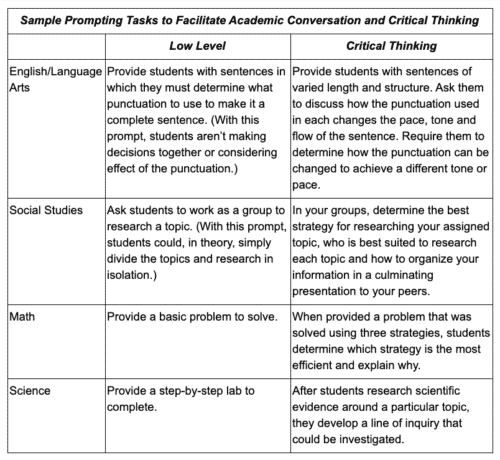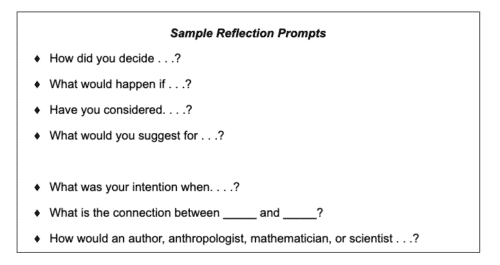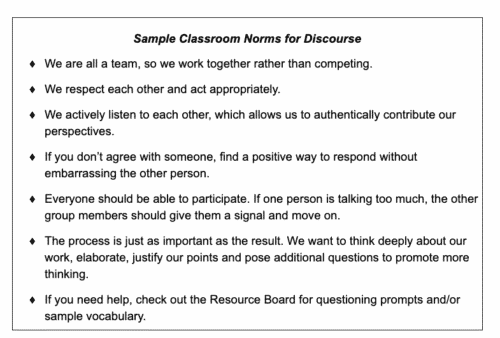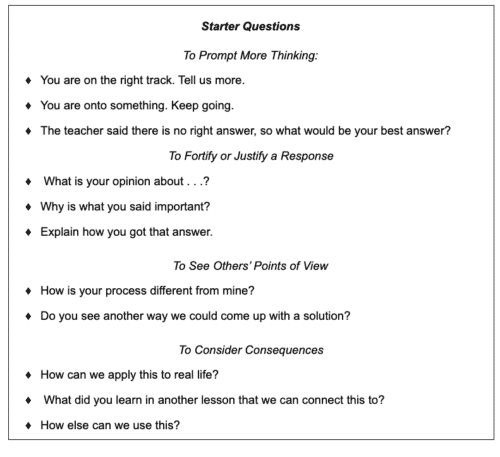When we think about traditional student talk and academic discourse, whether it is in response to a teacher’s question, discussion with other students or generating questions, there are common problems.

In recent years, the conversation has shifted from classroom talk and discussion to student discourse. What exactly is the difference? Student discourse is focused on “on-task” talk, as well as the use of academic vocabulary. In other words, not only is discourse more rigorous, it is more purposeful. There are four strategies you can use to increase discourse in your classroom.
Aspect One: Critical Thinking
Simple, low-level conversations should be, at best, a minor part of your classroom. Although there is a time and place for basic information, it should always lead to higher-level, critical thinking.

Aspect Two: Reflection Encouragement
Reflection should be an ongoing part of discourse. Students should self-reflect, which then results in partner or group reflection. Students may need starter prompts to guide the reflective process.

Aspect Three: Classroom Norms
If we want to incorporate discourse into our classroom, we cannot assume that it will automatically occur. In addition to teaching students what to discuss, we need to provide and teach a set of norms explaining how to discuss.

Aspect Four: Student Participation
As we said earlier, a challenge you likely face is when a few students dominate discussions, whether it is in the whole class or in small groups or pairs. When you are guiding a whole class discussion, you can minimize this by calling on a variety of students, regardless of who raises their hands. You can also provide an opportunity to share with a partner before you ask for answers as a whole group, which encourages participation. In small groups, if you have issues with particular students and an individual conversation does not take care of the issue, you might consider using a timer or a timekeeper to limit the amount of time each student can speak or using tokens to be used for each comment. When a student runs out of tokens, they are no longer allowed to speak. Although neither of these is ideal, since they inhibit conversation, it may be necessary to ensure all students can participate. A related challenge to participation is when students get stuck or don’t know what to say, and therefore, they don’t say anything. In this case, we want to encourage students, which we can do by providing question starters. The goal is for other students to ask the starter questions so that the group can continue its discussion.

Adapted From: https://ptgmedia.pearsoncmg.com/images/9780205627585/downloads/Echevarria_math_Ch1_TheAcademicLanguageofMathematics.pdf
A Final Note
Academic discourse is a critical part of your classroom, but there are four key aspects to consider. Critical thinking, reflection, norms, and participation facilitate discourse rather than simple conversation.
- WNEP – Taking the Classroom Outdoors
- edCircuit – 3 Ways to Use Exit Slips in Your Classroom





